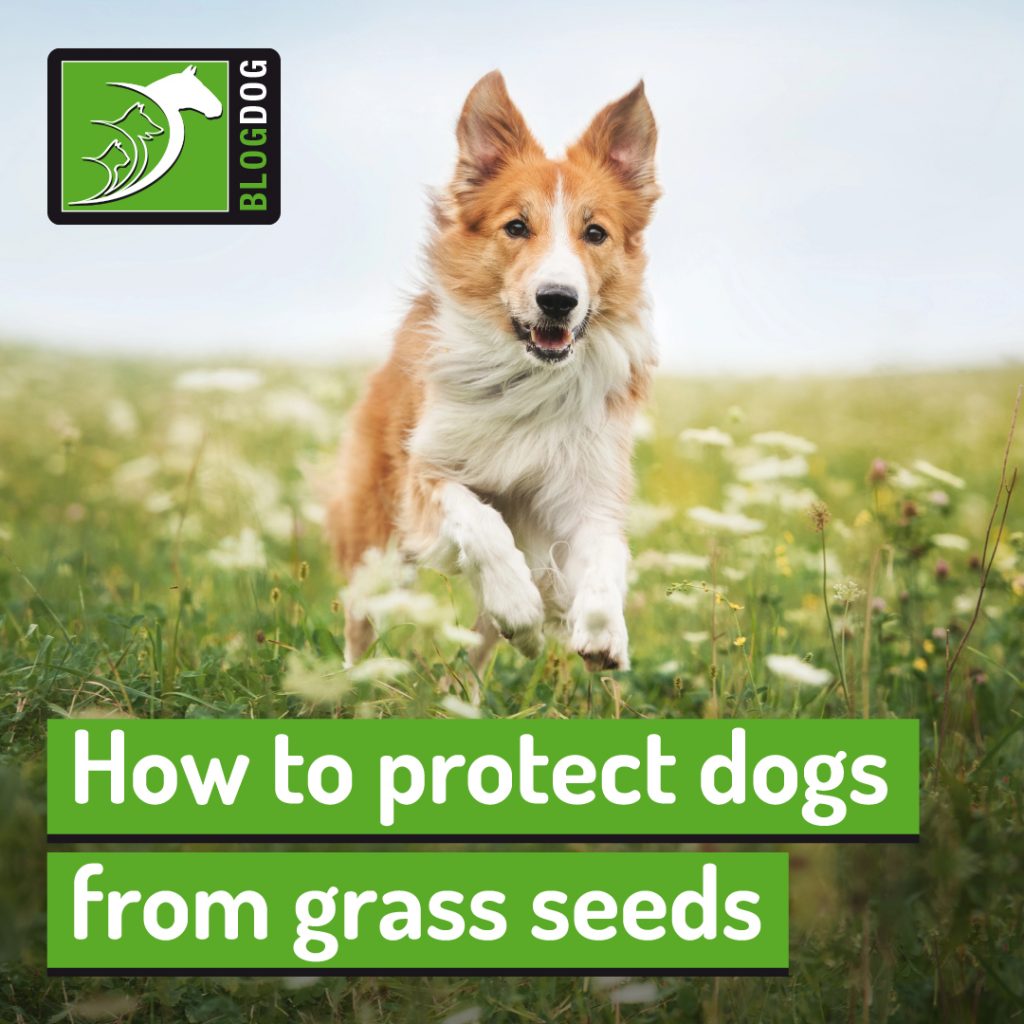Grass seeds are the seed heads of various types of grass, commonly found during the summer months, particularly in areas with tall grass, meadows, and woodland. While they may appear harmless, they can pose a serious risk to dogs.
These tiny, barbed seeds are spread easily, which means that they can often become lodged in your dog’s fur, ears, eyes, or between their toes. In addition, their pointed shape allows them to penetrate the skin and, in some cases, migrate further through the body. This can lead to painful infections, abscesses and, in more severe cases, internal damage if the seed travels to areas such as the chest or abdomen.
Dogs with long or thick coats, such as Golden Retrievers, Spaniels and Bernese Mountain Dogs, are especially vulnerable due to the way grass seeds can easily catch and hide in their fur.
What’s the big issue with grass seeds?
Grass seeds may be small, but they can cause significant problems once they become embedded in your dog’s body. Certain areas of the body are particularly vulnerable, and knowing the signs to watch out for can help you act quickly.
The ears are one of the most common places for grass seeds to get lodged, especially in dogs with floppy ears such as Spaniels or Hounds. If a seed makes its way into the ear canal, your dog may shake their head repeatedly, paw at their ears, or rub their head against the floor or furniture. You might also notice an ear discharge and an unpleasant smell.
Grass seeds can also find their way into the eyes, often becoming trapped under the eyelids. This can be extremely uncomfortable, leading to redness, swelling, discharge, and frequent pawing at the face.
Another common entry point is the skin, particularly in sensitive areas like between the toes. If your dog is persistently licking a paw, limping, or has a swelling between the toes, a grass seed could be the culprit.
In some cases, dogs may inhale a grass seed while sniffing around. When this happens, you may notice frequent sneezing, pawing at the nose, or a runny discharge. Occasionally, seeds can migrate deeper into the respiratory system and lead to more serious issues.
Finally, though less common, a dog may swallow a grass seed while grooming or chewing on grass. If ingested, the seed could potentially cause irritation or complications in the mouth, throat, or even further along the digestive tract.
How are grass seed injuries treated?
If you notice a grass seed sitting on your dog’s coat or resting on the surface of their skin, and it hasn’t broken through, you can gently remove it yourself. It’s important to act quickly, to prevent seeds from burrowing in, so make sure to check your dog after a walk through tall grass.
However, if the seed has pierced the skin or is lodged in sensitive areas such as the eyes or ears, please get in touch with your vet. Attempting to remove it at home may risk pushing it deeper or causing further damage.
At the vets, in straightforward cases, the grass seed can be removed with tweezers. But once a seed has entered the body, whether under the skin, inhaled into the nasal cavity, or lodged deeper in the ears, things can become more complicated.
Grass seeds don’t show up on standard X-rays, which can make locating them a challenge. In these cases, more advanced imaging or procedures like an endoscopy may be needed to find and safely remove the seed, depending on its location.
Surgery might also be required if the seed has travelled deeper into the body or caused an infection or abscess.
How can you keep your dog protected from grass seeds?
While it’s virtually impossible to avoid grass seeds entirely during the summer months, there are a few simple steps you can take to reduce the risk of problems:
- Regular grooming is especially important for dogs with longer coats, as keeping the fur well-trimmed can make it harder for grass seeds to latch on and go unnoticed. Trimming the fur on the inside of the ear flaps is a good idea in dogs with floppy ears.
- After every walk, especially in areas with tall grass or meadows, take a few minutes to check your dog over, paying close attention to most vulnerable areas. A quick inspection can help you spot any seeds before they cause trouble.
- If your dog has long hair around their feet or ears, it’s worth avoiding areas with dense or overgrown grass where seeds are more likely to be present.
And if you’re ever unsure or notice anything unusual (from head shaking to limping) don’t hesitate to get in touch with your vets.
Conclusion
Grass seeds may be tiny, but they can cause big problems for your dog, particularly during the warmer months when outdoor adventures are at their peak.
By staying vigilant, keeping up with regular grooming, and checking your dog after walks, you can catch any issues early and help prevent more serious complications.
If you suspect your dog has a grass seed injury or you’re unsure what to look for, don’t wait for symptoms to worsen, seek veterinary help straightaway.

